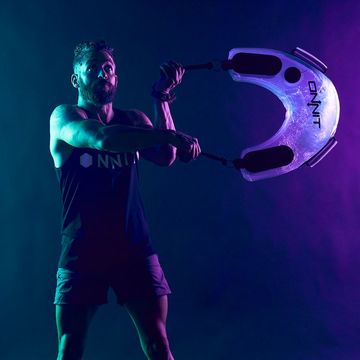This is Your Quick Training Tip, a chance to learn how to work smarter in just a few moments so you can get right to your workout.
Anyone who lifts weights knows what failure feels like. Even if you aren’t familiar with the technical definition of the term in the context of resistance training—and regardless of whether you’re trying to build strength, power, endurance, or muscle—you know that you should be lifting heavy enough in most exercises to barely eke out the last couple of reps in your final set with good form. In other words, you understand that your goal is to achieve “failure”—the point at which you cannot perform another rep without using body English or the help of a spotter.
But if you’ve been lifting for a while—and especially if your training plan includes drop sets and monster sets—you know that when you achieve failure, the muscle you’re targeting doesn’t suddenly cease functioning. If you reduce the load and/or target it with a different exercise, you can continue to hammer the muscle, banging out additional reps and potentially increasing its adaptation stimulus by achieving a more comprehensive state of fatigue.
That’s why exercise scientists, top coaches, and elite trainers distinguish between task failure and muscular failure. Task failure is what most gym-goers mean when they say “failure.” It’s the point at which you can’t bang out another rep of a given exercise without compromising your form. Muscular failure, on the other hand, is when the target muscle taps out. It doesn’t matter whether you grab a lighter weight or switch exercises—the muscle is done, and forcing it to continue contracting under load will only increase your risk of overtraining and injury.
Your move: Focus the bulk of your training on task failure, but weave in muscular failure strategically (e.g., by using either of the techniques mentioned above).
Because this method is so intense, you should go after muscular failure no more than once or twice per workout. But pushing your muscles to that point (and not beyond) can hit the accelerator on your gains.

Trevor Thieme is a Los Angeles-based writer and strength coach, and a former fitness editor at Men’s Health. When not helping others get in shape, he splits his time between surfing, skiing, hiking, mountain biking, and trying to keep up with his seven year-old daughter.












